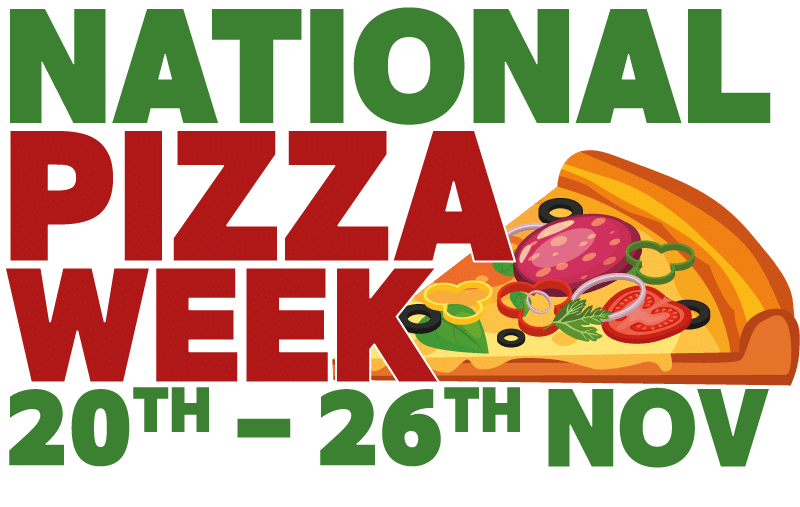Who doesn’t love a slice of gorgeously gooey pizza smothered in tangy tomato sauce and melted cheese? Whether you prefer an ultra-thin and crispy crust or a doughier deep pan, a simple Margherita or a myriad of tasty toppings, sharing a slice with friends or a romantic Italian treat for two, there’s no denying that pizza in all its glorious forms is one of the world’s most popular foods. From humble beginnings as a street food staple for the working classes in southern Italy to the whopping tens of thousands of independent and chain pizza restaurants currently trading in the U.S.A., pizza has never been more popular.
But have you ever given a thought to the extraordinary evolution of pizza? Let’s take a closer look at its remarkable journey from Italy all the way across the Atlantic to America.
The origins of pizza
The earliest documented usage of the word pizza is in a Latin church manuscript from 997 AD, detailing an annual homage of twelve pizzas from a feudal lord in part payment to the bishop of Gaeta for land rent. Fast-forward to 16th-century Naples, where pizza would have been a simple, rustic flatbread, generally eaten by the poor, rather than the universally popular loaded variations we enjoy today. Although one infamous tale has Neapolitan pizzaiole, Raffaele Esposito, creating an eponymous pizza in the colours of the Italian flag, with tomatoes, mozzarella cheese and basil, to honour Margherita, queen consort of Italy’s visit to Naples in 1889, it’s more likely that the modern-day pizza started to evolve when the Spanish first introduced the tomato from South America in the 16th century. Until the Italian peasants started to add tomatoes as a flatbread topping in a tasty forerunner to the pizza we know and love today, many Europeans erroneously believed they were poisonous!
The world’s very first pizzeria is widely believed to be the Antica Pizzeria Port’Alba in Naples, which started as a peddlers stand near one of the city gates in 1738, before opening as a pizzeria and taverna in 1830, the ideal place for hungry travellers and traders to refuel with a Neapolitan pizza or catch up on business on their way in or out of the city.
Neapolitan-style pizza Margherita is traditionally created with simple ingredients: a thin and crispy base, kneaded and formed by hand, made with highly refined Italian wheat flour and fresh brewer’s yeast, topped with raw San Marzano tomatoes, either fior di latte or mozzarella di Bufala cheese, fresh basil and extra-virgin olive oil. A defining characteristic is the sauce-to-cheese ratio – a true pizza Napoletana should be crafted with more tomato sauce than cheese and cooked in a wood-fired oven at a very high temperature for between 60 and 90 seconds. Today, Neapolitan pizza has a protected status – the Associazione Verace Pizza Napoletana (True Neapolitan Pizza Association) has strict criteria that restaurants must meet if they wish to gain VPN certification and, in 2009, the famous delicacy was registered as a ‘Traditional Speciality Guaranteed’ dish with the European Union.
So, how did pizza cross the Atlantic?
Pizza first arrived on U.S. shores in the late 19th and early 20th centuries, when more than five million Italians emigrated to the large cities of the northeast in a bid to escape the rural poverty of Southern Italy and Sicily in particular, bringing a tantalising taste of their homeland along with them. Lombardi’s in Little Italy, New York, was the first pizzeria in the America, opening its doors in 1905. The word pizza became integrated into the English language in the 1930s, having previously been known as ‘tomato pie’ by English speakers, a name still used today in some regional pizza variations. Initially confined to the Italian-American immigrant communities, pizza’s appeal slowly started to grow, with local varieties from New York, Buffalo, Chicago, Detroit and California, to name but a few, including fluffy-crust, deep-dish, pizza strips, Greek, square-cut, yeast-less, stuffed crust and pizza-on-a-stick.
Pizza really took off across the rest of the States when American soldiers previously stationed in Italy returned home with a taste for the good stuff they had been sampling overseas. Independent pizzerias began sprouting up all over the country and, with popularity booming and pizza quickly becoming a mainstream food staple, it wasn’t long before the pizza chain was born with Shakey’s Pizza in California becoming the first franchise in 1954, followed by big boys Pizza Hut in 1958, Little Caesars in 1959 and Domino’s in 1960.
In the 1950s, when home freezers became a common and affordable item in American households, the concept of frozen dinners really caught on, with restaurant owners offering pizzas for customers to cook in their own homes before Jim and Rose Totino began the mass production of frozen pizzas from their plant in St Louis Park, Minnesota.
Nowadays, it couldn’t be easier for Americans to slice into their pizza of choice, whether that be eating out, ordering in or rustling up at home. Their passion for pizza shows no sign of waning anytime soon, with the U.S. pizza industry worth a staggering $46b from the circa three billion pizzas sold annually. Around 13% consume pizza on any given day, with the average American devouring over 46 delicious slices every year. With over 80 thousand pizza restaurants operating in the US, made up of over 44 thousand independents and around 36 thousand chain outlets, it’s hardly surprising that a mouth-watering 350 slices of pizza are consumed every second. And just in case you were wondering – pepperoni consistently comes out as the most popular pizza topping in the U.S.!
Pizza Statistics References:
https://www.statista.com/topics/1610/pizza-delivery-market/#topicOverview

